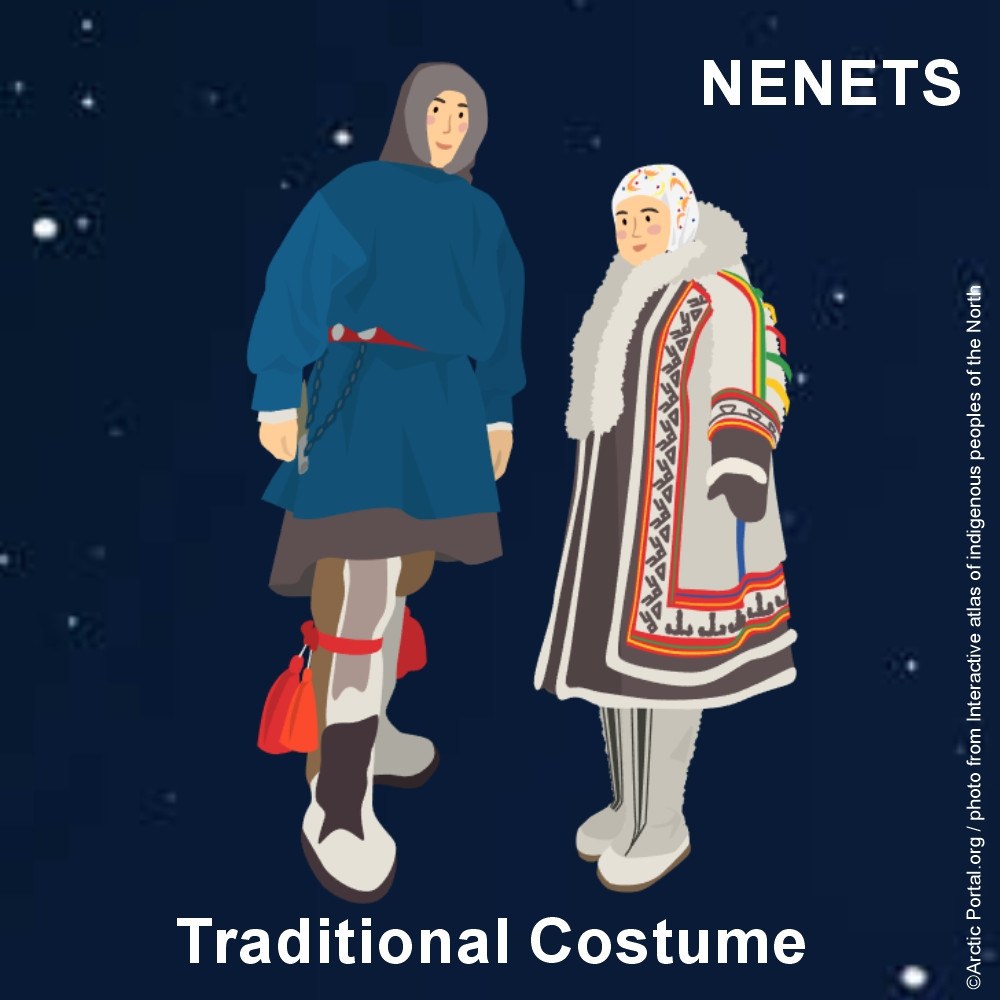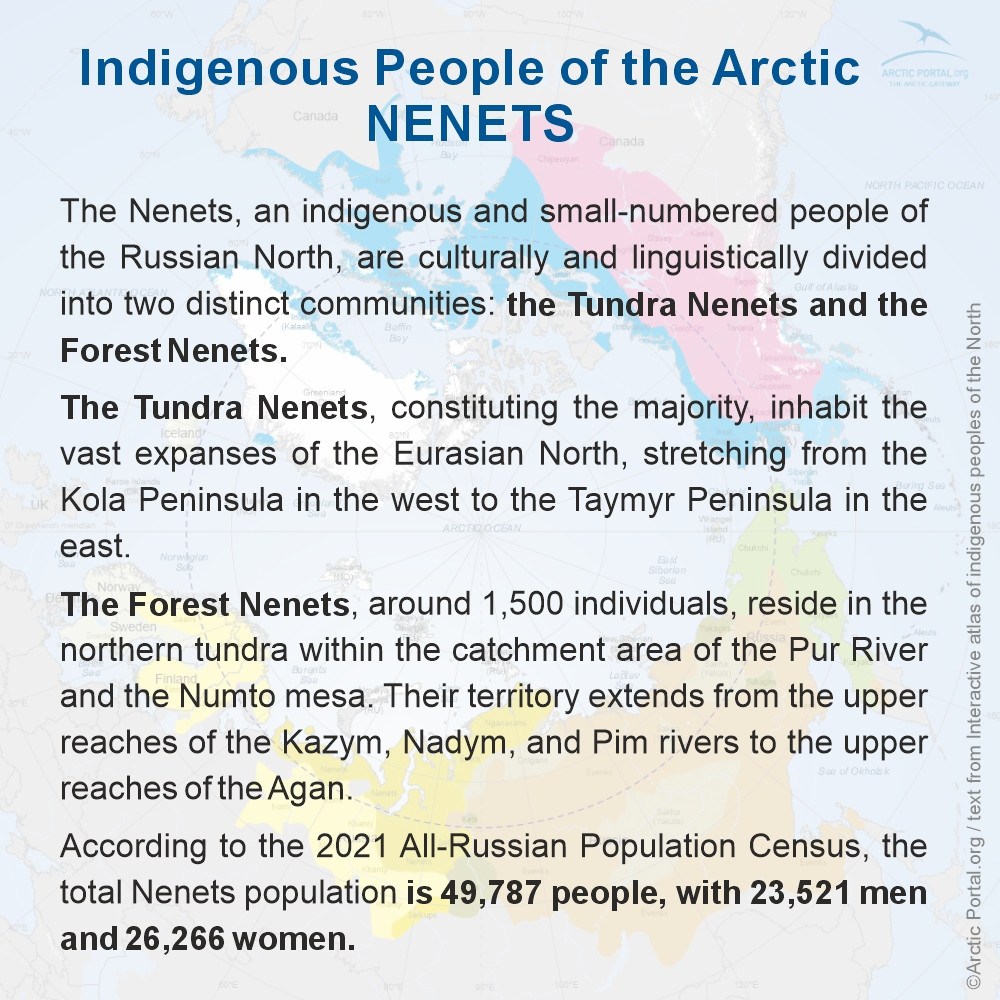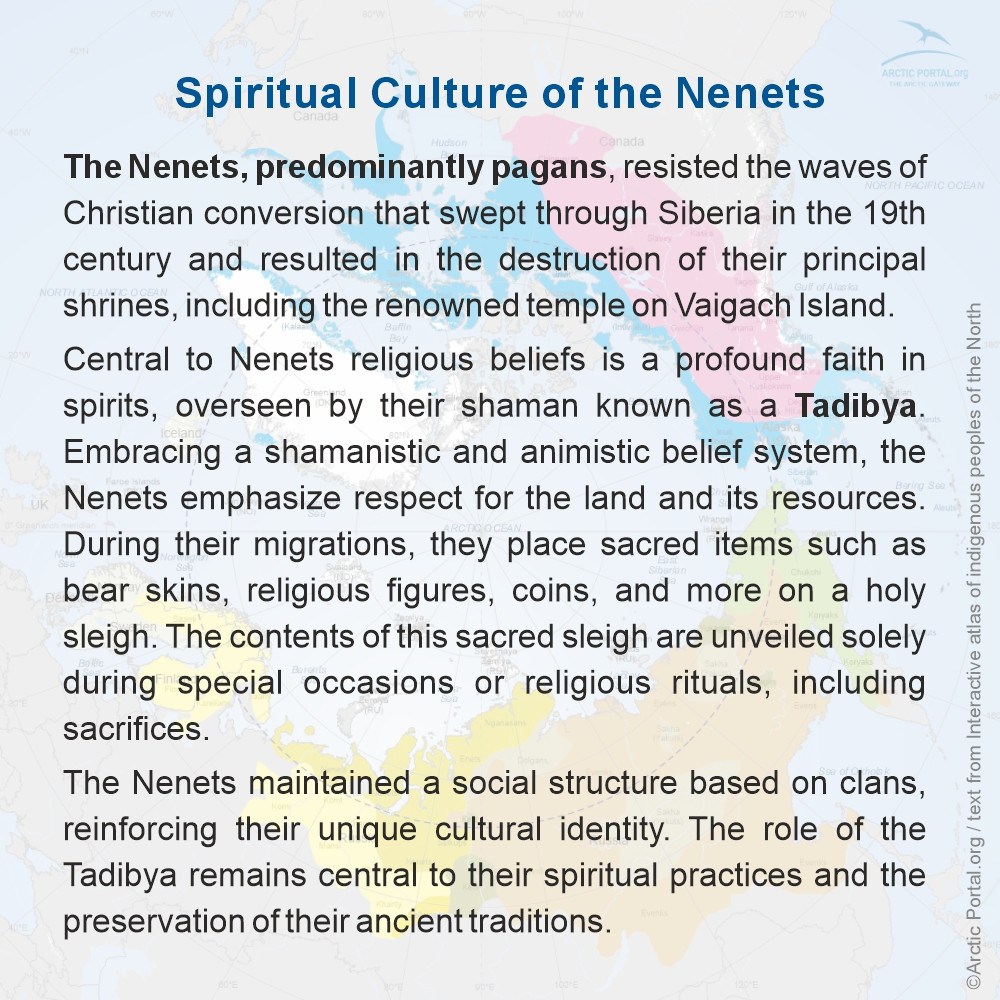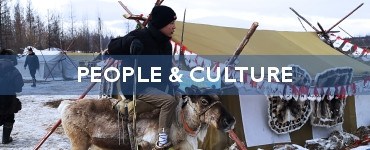The Nenets, an indigenous and small-numbered people of the Russian North, are culturally and linguistically divided into two distinct communities: the Tundra Nenets and the Forest Nenets.
The Tundra Nenets, constituting the majority, inhabit the vast expanses of the Eurasian North, stretching from the Kola Peninsula in the west to the Taymyr Peninsula in the east.
The Forest Nenets, around 1,500 individuals, reside in the northern tundra within the catchment area of the Pur River and the Numto mesa. Their territory extends from the upper reaches of the Kazym, Nadym, and Pim rivers to the upper reaches of the Agan.
According to the 2021 All-Russian Population Census, the total Nenets population is 49,787 people, with 23,521 men and 26,266 women.
The Nenets people refer to themselves using the endonyms nenets', hasava (tundra dialect), and neshchang (forest dialect), all signifying 'person' or 'man'. UNESCO recognizes Nenets as endangered languages.
The primary source of sustenance for the Nenets is derived from hunting and reindeer herding. The use of reindeer as draft animals throughout the year enables them to cover great distances. Large-scale reindeer herding emerged in the 18th century. To aid in herding reindeer and pulling sleds, the Nenets developed the Samoyed dog, which Europeans explorers later adopted for polar expeditions due to its adaptation to arctic conditions.
A significant threat to reindeers comes from tundra wolves, causing substantial economic losses as they prey on the reindeer herds, which are vital for the livelihoods of the Nenets families.
Spiritual Culture of the Nenets
The Nenets, predominantly pagans, resisted the waves of Christian conversion that swept through Siberia in the 19th century and resulted in the destruction of their principal shrines, including the renowned temple on Vaigach Island.
Central to Nenets religious beliefs is a profound faith in spirits, overseen by their shaman known as a Tadibya. Embracing a shamanistic and animistic belief system, the Nenets emphasize respect for the land and its resources. During their migrations, they place sacred items such as bear skins, religious figures, coins and more on a holy sleigh. The contents of this sacred sleigh are unveiled solely during special occasions or religious rituals, including sacrifices.
The Nenets maintained a social structure based on clans, reinforcing their unique cultural identity. The role of the Tadibya remains central to their spiritual practices and the preservation of their ancient traditions.
Visit our Map Gallery Arctic Portal specializes in creating customized graphical maps that cover a range of significant Arctic topics with global recognition. We are continuously working on new maps and adding them to our Gallery.











